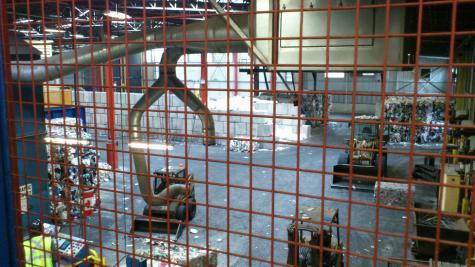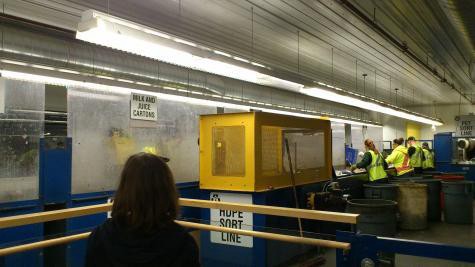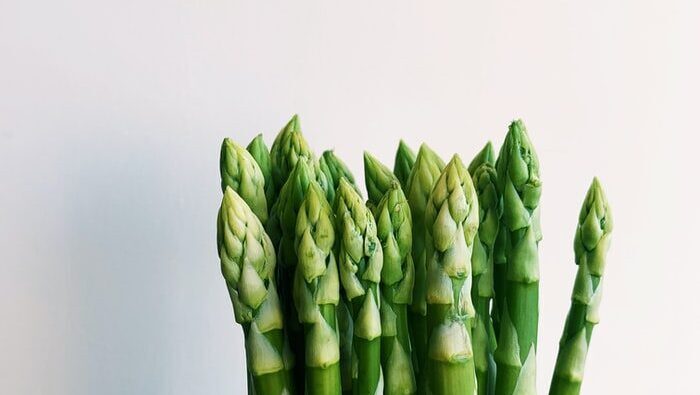4 min read
Written by Steffanie Scott

So-called ‘waste’ is the oft-forgotten other end of the food chain. But it’s a critically important resource, if cycled back into production, to provide composted organic matter for maintaining soil fertility. And reducing or reusing food packaging is also a key element of a more sustainable food system.
Four school buses filled with area residents participated in tours of the Region’s landfill throughout the morning of October 20 — there were long wait lists for these spots, which filled up weeks in advance. On the tour, we learned that the landfill accumulates 900 tons of garbage daily — 42% of which is residential (the rest is commercial/industrial). And 30–40% of this total ‘waste’ is not waste at all — it could be diverted to green and blue bin recycling.
52% of all ‘waste’ is diverted from the landfill: 19% to blue boxes, 19% in the form of collected yard waste & leaves, 5% to green bin organic waste, and 9% to other recycled uses: backyard composting and grass-cycling, bikes, toilets, tires, concrete, cooking oil, e-waste, drywall, shingles, household hazardous waste, Goodwill’s collection of household items, and Habitat for Humanity’s collection of used building materials. Waterloo Region’s green bin organic materials are currently processed in Guelph. All else is dealt with at the Waterloo Region Waste Management Facility on Erb St West.
An anonymous curbside waste audit in July 2012 determined that in an average garbage bag, there was 46% garbage, 39% divertible green bin organics and 15% divertible blue box material. So only 22% of household organics are being captured through the green bin program, and only 74% of all potentially recyclable materials are being captured through the blue box program. In other words, there is an opportunity to compost and recycle a further 54% of what’s typically tossed in the garbage. If all residents used green bins and blue boxes fully, we would be achieving 76% waste diversion.
Some interesting facts:
- The methane gas emitted from the landfill is captured and feeds into the region’s power grid, providing enough power to supply 4000 homes.
- One ‘cell’ of garbage at the landfill, equivalent in depth to a 32-story building, used to take 17–18 years to fill, but at our current rate of waste generation would take only 5 years. Hence the urgency to diverse more of our waste to recycling.
- Foil-lined coffee bags cannot be recycled — which makes me wonder, when are food companies going to get on board and ensure all food packaging is recyclable?
- Tim Horton’s cups cannot go in the blue bins, due to their wax film. Instead (if you haven’t already switched to a reusable mug), consider using them to scoop up pet waste, and then put them in the green bin.
- There is more pet waste than disposable diapers in the landfill.
- Juice cartons are recycled to make toilet paper.
- The number on each plastic item (usually printed in the recycling triangle on the bottom of each item) indicates a different chemical formulation, so each type needs to be sorted separately at the Materials Recycling Centre. Types 1 through 7 are accepted.
- Plastic cling-film wrap, bread bags, milk bags, ziplock bags, and vegetable bags will not typically be accepted for recycling, unless they are all placed into one bag in your blue bin (for easier sorting at the Centre) — all the more reason to cut down your use of unnecessary plastic bags.
Waste management staff are promoting a challenge to area residents: that they aim to put out only half a bin (or garbage bag) of garbage per week, and all else be recycled. They also recommend that people use two blue bins: one for papers and one for other materials. This speeds up the sorting for recycling truck operators.
What are your thoughts on how we could improve recycling and waste reduction in our food system? Provide your input on the
Waste Management Master Plan survey or read the Waste Management Master Plan Project Reports and Information.


